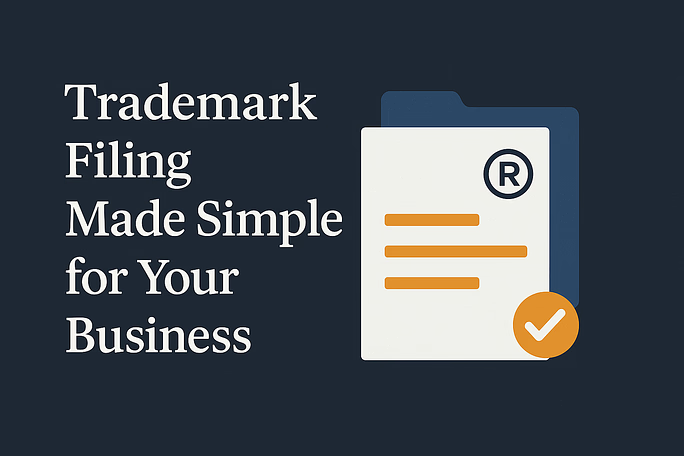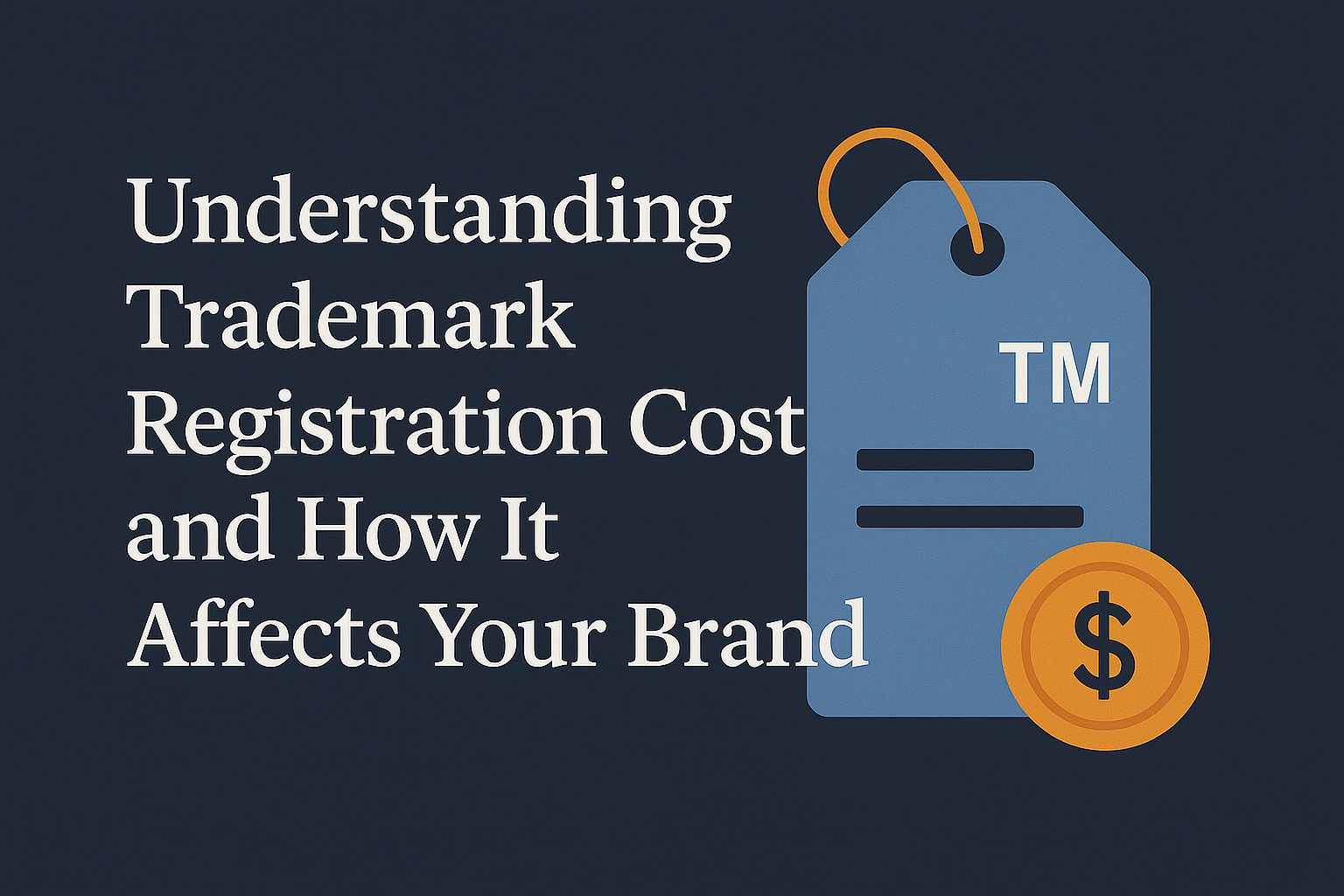
Trademark Confusion: Understanding the 13 DuPont Factors
If you’re filing a trademark application in the United States, one of the biggest hurdles is trademark confusion. The U.S. Patent and Trademark Office (USPTO) refuses thousands of applications every year because they are too similar to existing trademarks.
To decide whether two marks are confusingly similar, the USPTO applies what’s known as the 13 DuPont factors: a list of criteria from the 1973 case In re E.I. du Pont de Nemours & Co. These factors are still used today by trademark examiners and the Trademark Trial and Appeal Board (TTAB).
Let’s go through each factor in simple terms, with real-world examples.
1. Similarity or Dissimilarity of the Marks
This factor looks at how the two trademarks look, sound, and feel, including spelling, pronunciation, and meaning.
Example: A mark like “Koka-Cola” for beverages would be refused because it looks and sounds almost identical to “Coca-Cola.”
Even small spelling changes don’t eliminate trademark confusion if the marks create the same commercial impression.
2. Nature of the Goods and Services
The USPTO compares the products or services linked to each mark. If they’re related, consumers might think they come from the same company.
Example: “Sunrise Coffee” and “Sunrise Tea” would likely cause confusion since both are beverage products sold to the same audience.
3. Trade Channels Used
This factor examines where and how the goods are sold: online, in stores, or through specific distributors.
Example: If “LUSHY” cosmetics and “LUSHIE” skincare products are both sold on Amazon or in Sephora, trademark confusion is more likely.
4. Purchasing Conditions
The USPTO considers whether purchases are made impulsively or carefully. The more impulsive the purchase, the higher the risk of confusion.
Example: A buyer choosing a $2 lip balm might not notice brand differences, while a doctor buying surgical tools will research thoroughly before buying.
5. Fame of the Existing Mark
Famous marks receive stronger protection. A well-known brand’s fame makes similar marks more likely to confuse consumers.
Example: “NIKE” is so famous that even “Nyké” for unrelated products might be rejected due to potential trademark confusion.
6. Number and Nature of Similar Marks in Use
If many similar trademarks are already used for similar products, consumers may be used to small differences, which can reduce confusion.
Example: With dozens of “Eagle” brands in the clothing industry, “Eagle Fit” might still pass because the marketplace is crowded with similar names.
7. Actual Confusion Between the Marks
The USPTO gives strong weight to evidence of real confusion, such as customer complaints or misdirected emails.
Example: If customers often confuse “Blue Sky Coffee” with “Blu Skye Café,” that’s solid proof of actual trademark confusion.
8. Length and Conditions of Concurrent Use Without Confusion
If both marks have been used for years without confusion, this can favor registration.
Example: “Summit Shoes” and “Summit Energy Bars” might coexist peacefully for a decade, showing that consumers can distinguish between them.
9. Variety of Goods and Services Associated with the Marks
The broader a brand’s use across multiple product lines, the greater the chance of confusion when new similar marks appear.
Example: Since Apple sells phones, computers, and streaming services, a new “Apple Fitness” brand might mislead consumers into thinking it’s connected to Apple Inc.
10. Market Interface Between the Parties
This factor reviews the relationship between the two owners, such as prior agreements, collaborations, or direct competition.
Example: If two companies previously co-branded under “BrightHome,” a later attempt by one to register “BrightHome Plus” could cause confusion.
11. Applicant’s Right to Exclude Others
If the applicant already owns similar trademarks, this can support their claim to the mark.
Example: Owning a registration for “EcoPure” cleaners helps justify registering “EcoPure Home” for related goods.
12. Extent of Potential Confusion
Even a small chance of confusion can matter, especially if mistakes could harm consumers.
Example: Two medications named “Cardiox” and “Cardioxin” could easily be mixed up, creating dangerous consequences.
13. Other Established Facts
This “catch-all” factor lets the USPTO consider any other relevant evidence, such as surveys or marketing overlap.
Example: If consumers on social media already assume two brands are connected, that evidence could prove likely confusion.
How the USPTO Balances the DuPont Factors
Not every factor applies in every case, and some carry more weight than others. The USPTO looks at the total picture: the marks, the goods, and how consumers encounter them in the real world.
You don’t need to win all 13 factors to succeed. But the more your mark differs from existing ones in sound, meaning, and marketplace use, the stronger your application will be.
Avoiding Trademark Confusion Before You File
To minimize your risk of USPTO refusal:
- Run a full trademark search before filing, not just a Google check.
- Compare marks visually and phonetically. Ask, “Would an average buyer think these come from the same company?”
- Consider your products, audience, and sales channels.
- Get professional guidance from an experienced professional.
At Trademark Angel, we help businesses avoid costly mistakes and trademark confusion. Our comprehensive searches and professional opinions identify risks early — saving you time, money, and frustration.
Key Takeaway
The 13 DuPont factors form the backbone of USPTO’s likelihood of confusion analysis. Understanding them helps you choose a mark that’s not only creative but legally strong.
If you’re unsure whether your trademark might cause confusion, book a free consultation at TrademarkAngel.com and file your application with confidence.
Frequently Asked Questions About Trademark Confusion
If you’re new to trademark law or filing a mark with the USPTO, you probably have questions about trademark confusion — what it means, how it’s determined, and how to avoid it. Below are some of the most common questions business owners ask about the DuPont factors and the likelihood of confusion in trademark applications.
1. What is trademark confusion?
Trademark confusion happens when consumers mistakenly believe that two products or services come from the same company because their trademarks look, sound, or mean something similar. The USPTO examines applications carefully to make sure that new trademarks won’t confuse customers or damage existing brands.
2. What are the DuPont factors?
The DuPont factors are a list of 13 criteria the USPTO uses to decide whether two trademarks are too similar. They consider things like how the marks look and sound, the types of goods or services, how and where they’re sold, how famous the earlier mark is, and whether there’s evidence of confusion in the real world.
3. Why does the USPTO refuse trademarks for confusion?
The USPTO refuses marks that could cause confusion because the trademark system is designed to protect consumers and existing brand owners. If two similar trademarks existed in the same market, people could buy the wrong product or assume a false connection between businesses.
4. How can I avoid trademark confusion before filing?
Before applying for a trademark:
- Do a comprehensive trademark search (not just a Google search).
- Check for similar names or logos that sell related products or services.
- Look at how your mark sounds and appears next to others in your industry.
- Get help from a trademark professional who can identify risks and guide you through the process.
This preparation can save you time, money, and the frustration of a USPTO refusal.
5. What should I do if my trademark application is refused for confusion?
If the USPTO issues a likelihood of confusion refusal (also known as a Section 2(d) refusal), you can:
- Work with a trademark attorney to prepare a legal response.
- Show that your mark and the other brand are used in different markets or contexts.
- Provide evidence that consumers are not likely to be confused.
- Adjust your goods or services description if needed.
It’s often possible to overcome a confusion refusal with the right evidence and arguments.
6. How can Trademark Angel help?
Trademark Angel helps businesses avoid trademark confusion by performing detailed trademark searches before filing and advising on strategy if a refusal occurs. We offer free consultations and expert assistance for U.S. and international trademarks.





